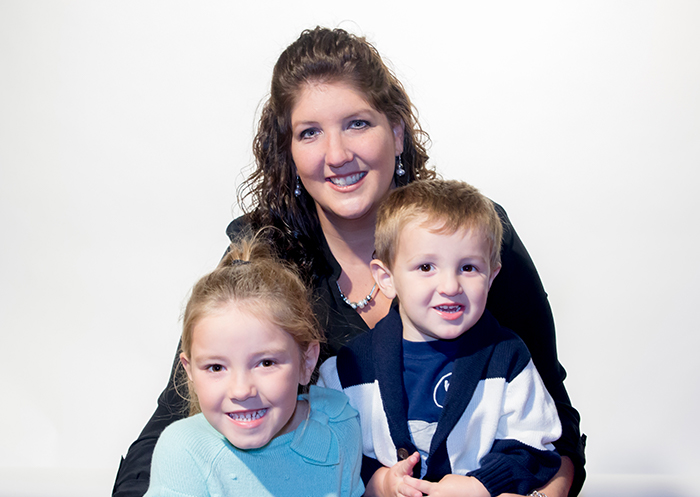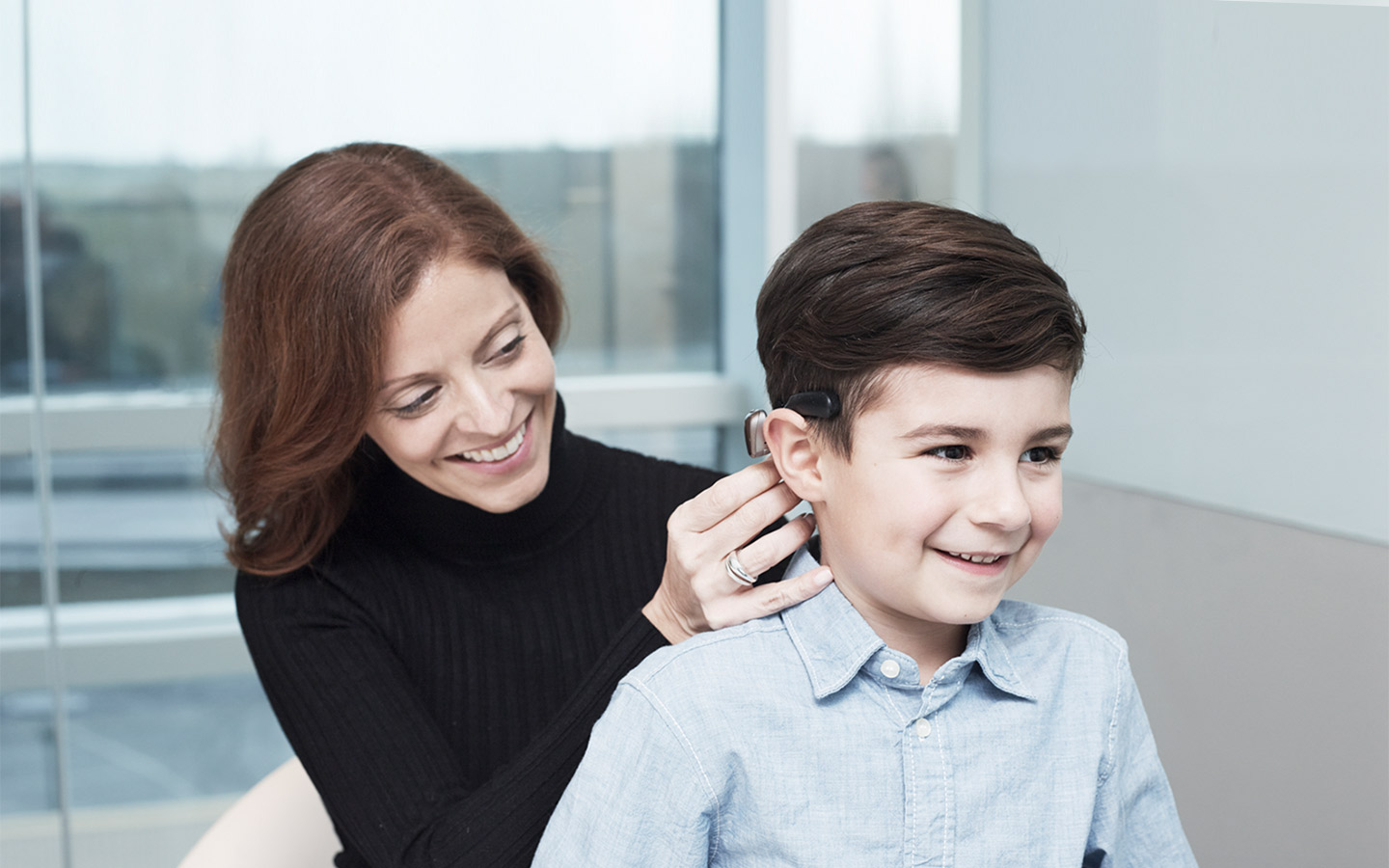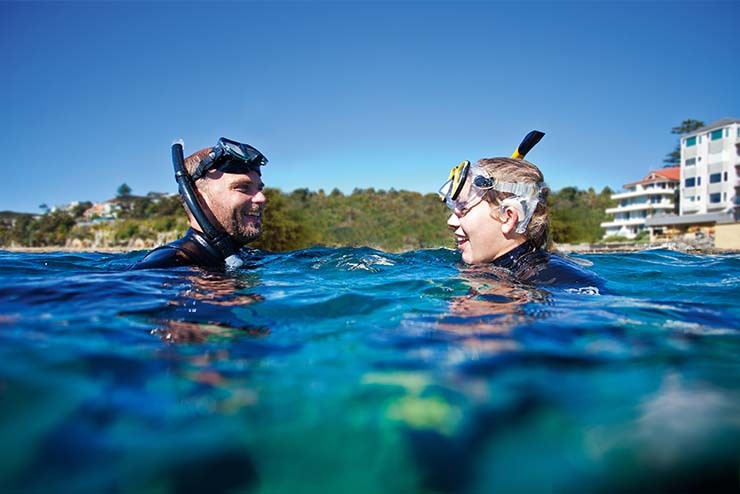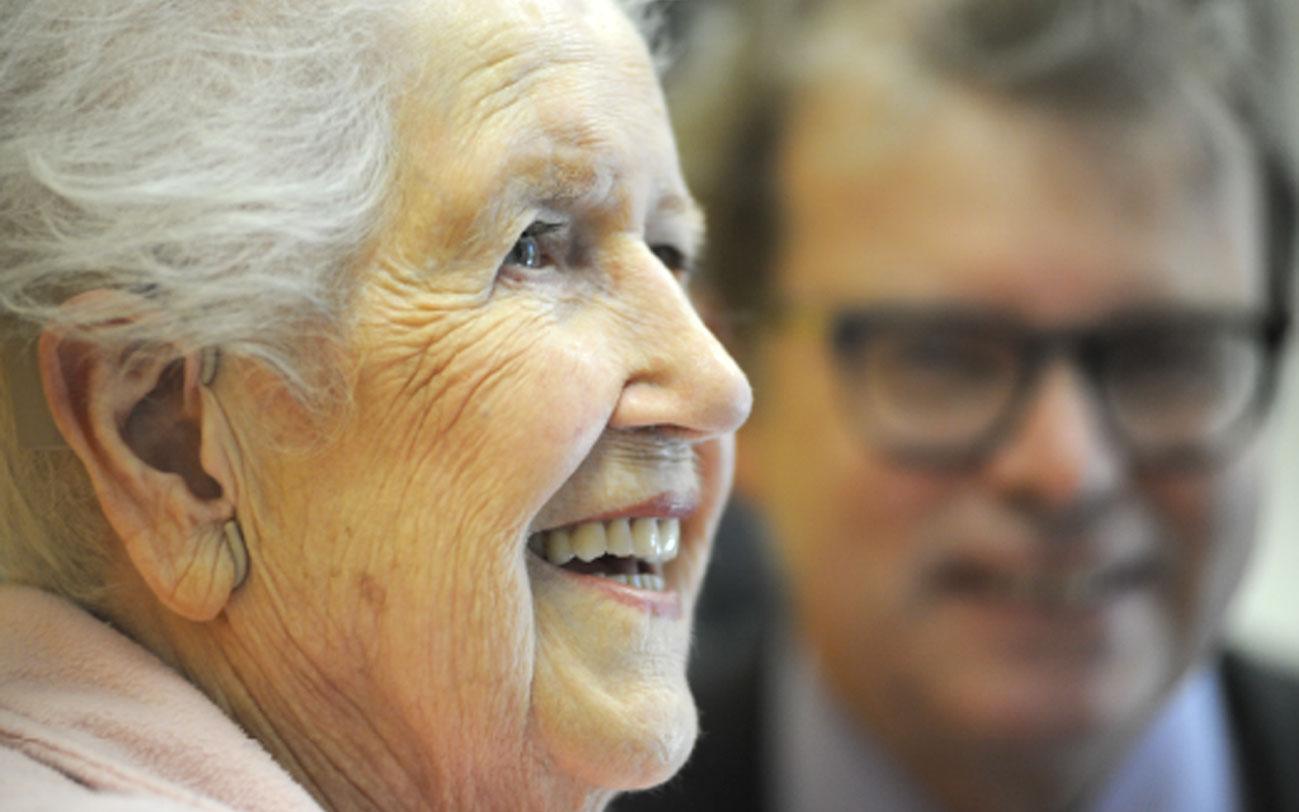Your child's bone conduction implant surgery
Learn about your child's recovery from bone conduction implant surgery so you know what will happen after the surgery.

What you'll find on this page
- Tips on caring for your child after surgery.
- When your child can return to school and activities.
- How long it may take to recover.
40 years and counting
Deciding on surgery can be difficult for parents, especially when children are young. You may worry about the procedure going well, or that your child might be in discomfort afterwards.
It’s normal to feel anxious, but you’re not alone.
Surgeons have performed bone conduction procedures for more than 40 years.
Understanding what to expect after surgery and how to care for your child will help you manage your own feelings as well as theirs.
"After the surgery, we actually went home that day. We were home by noon. And by three o’clock we were having to remind her to stop jumping around, you just had surgery!"
- Melissa, mother of Isabella, Cochlear™ Baha® System recipient
After your child’s procedure
Whether your child has Osia® System surgery or Baha® System surgery, your child’s head will be wrapped in a bandage to protect the incision site behind the ear.
Your child will likely have a bandage after surgery for a day or two. You will get instructions on how to care for the implant site after the bandage is removed.
It’s important to follow your hearing health professional's instructions regarding rest and recovery during this time.
How to care for your child after bone conduction implant surgery
This post-surgery period is a time for rest.
Here are some tips to help your child get better.
- Follow your doctor’s instructions and make sure your child takes medication exactly as directed.
- Your child may want to spend the first few days in bed.
- Encourage quiet indoor play for the first few days.
- Your child will have a bandage over their incision. Your doctor will let you know when you can remove the bandage.
With the sound processor fitting approaching, take this opportunity to think about any questions you or your child have for the upcoming visits to their hearing health professional.
How long does it take to recover?
Your child's hearing health professional will set a recovery period before it's time to get the sound processor fitted.
Each child recovers at a different pace. The care they need will vary too, depending on their independence and lifestyle.
Most children can go back to school or child care one week after surgery. However, it’s usually best they don't take part in sports for three to four weeks afterwards.
Talk to your doctor about how much activity is safe for your child.

Disclaimer
Please seek advice from your health professional about treatments for hearing loss. Outcomes may vary, and your health professional will advise you about the factors which could affect your outcome. Always follow the directions for use. Not all products are available in all countries. Please contact your local Cochlear representative for product information.
For a full list of Cochlear’s trademarks, please visit our Terms of Use page.
In Australia, Cochlear™ Nucleus® implant systems are intended for the treatment of moderately severe to profound hearing loss.
In Australia, Baha® bone conduction implant systems are intended for the treatment of moderate to profound hearing loss.
In Australia, the Cochlear™ Osia® System is indicated for patients with conductive, mixed hearing loss and single-sided sensorineural deafness (SSD) aged 5 years and above with up to 55 decibels sensorineural hearing loss. Patients should have sufficient bone quality and quantity to support successful implant placement. Surgery is required to use this product. Any surgical procedure carries risk.
For Cochlear™ Nucleus®, Osia® and Baha® systems: This product is not available for purchase by the general public. For information on funding and reimbursement please contact your health care professional.
Any testimonial featured on this website is intended for an Australian audience only.






